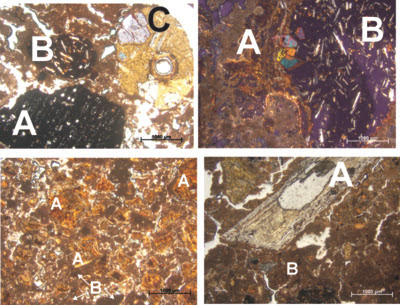Christmas Parcels

What excitement is this? Parcels in the post over Xmas! Perhaps more exciting than all the Xmas chocolates and treats? It's the long awaited box of micromorphology slides from Medieval Riga, Latvia! Ok, so maybe not quite as exciting as chocolate, but still pretty fab. I've been waiting for these to be ready since September so it's quite a nice suprise to see them all finished and coverslipped, just in time to get back to work after the holidays. Excuse the camera flash, I will scan them in properly at some point. Waterlogged and charred plant remains, and also (I suspect) animal dung Occupation debris accumulated on a medieval floor from the city of Riga I also got sent a copy of The Archaeology of the Prussian Crusade by Aleks Pluskowski , PI on the Ecology of Crusading project. Parcels of excitement This is something else I have been looking forward to - I did a lot of the line drawings for it and it has been very exciting seeing it come together







